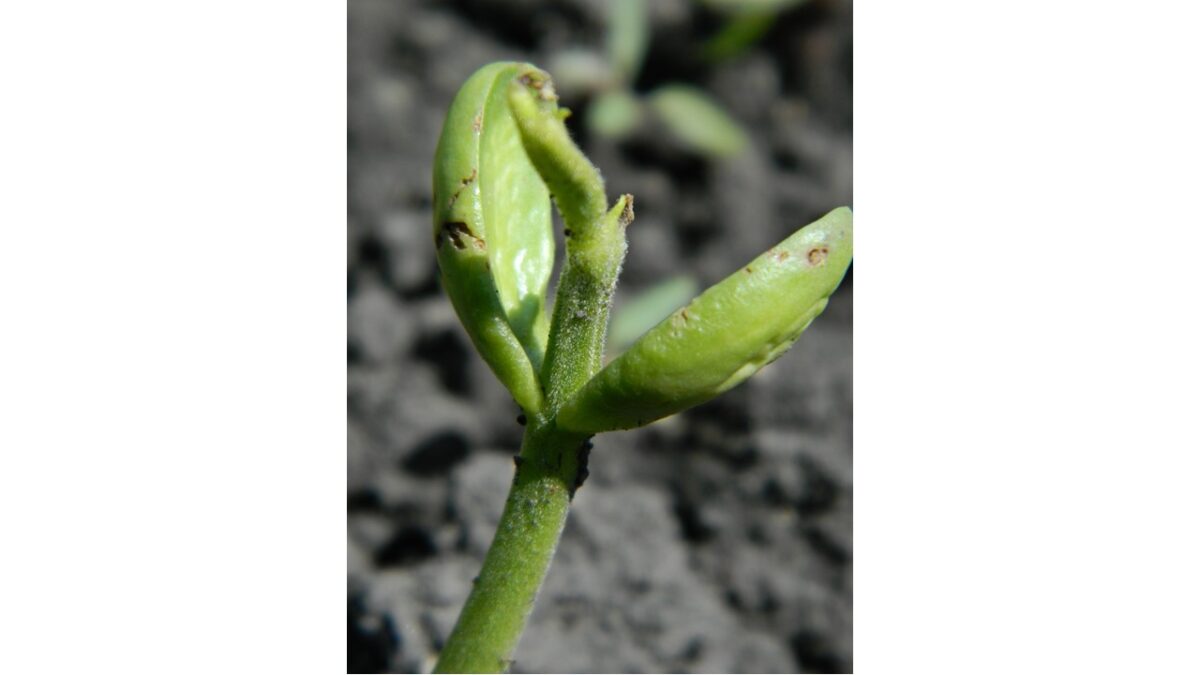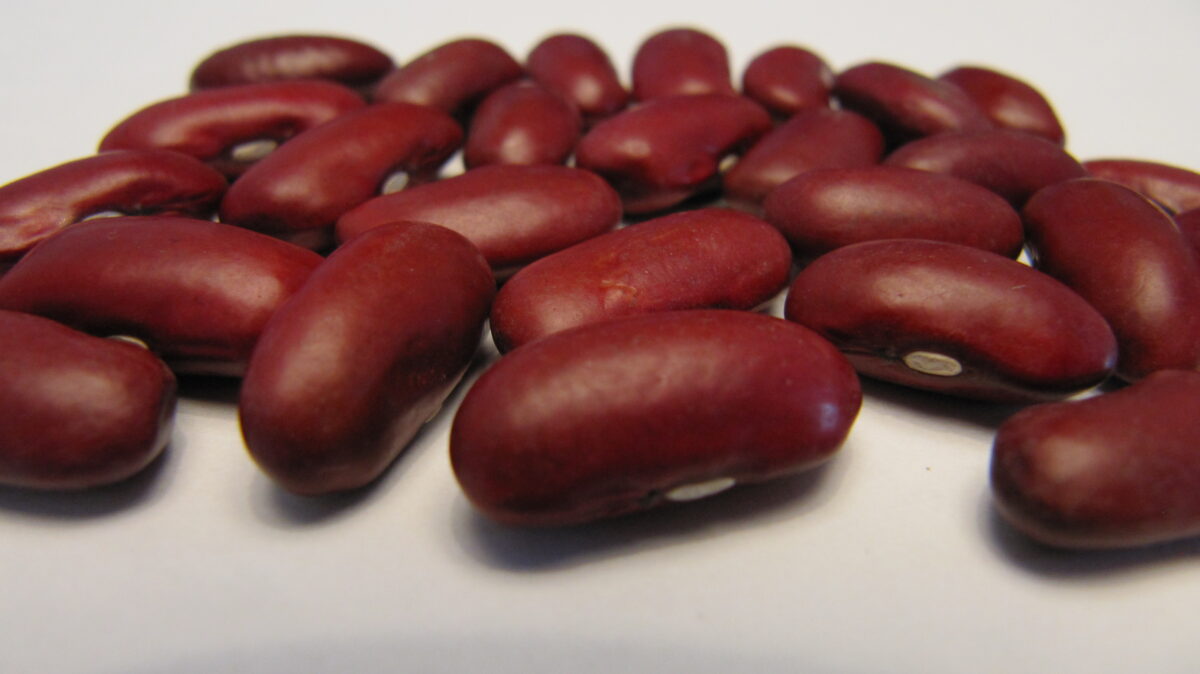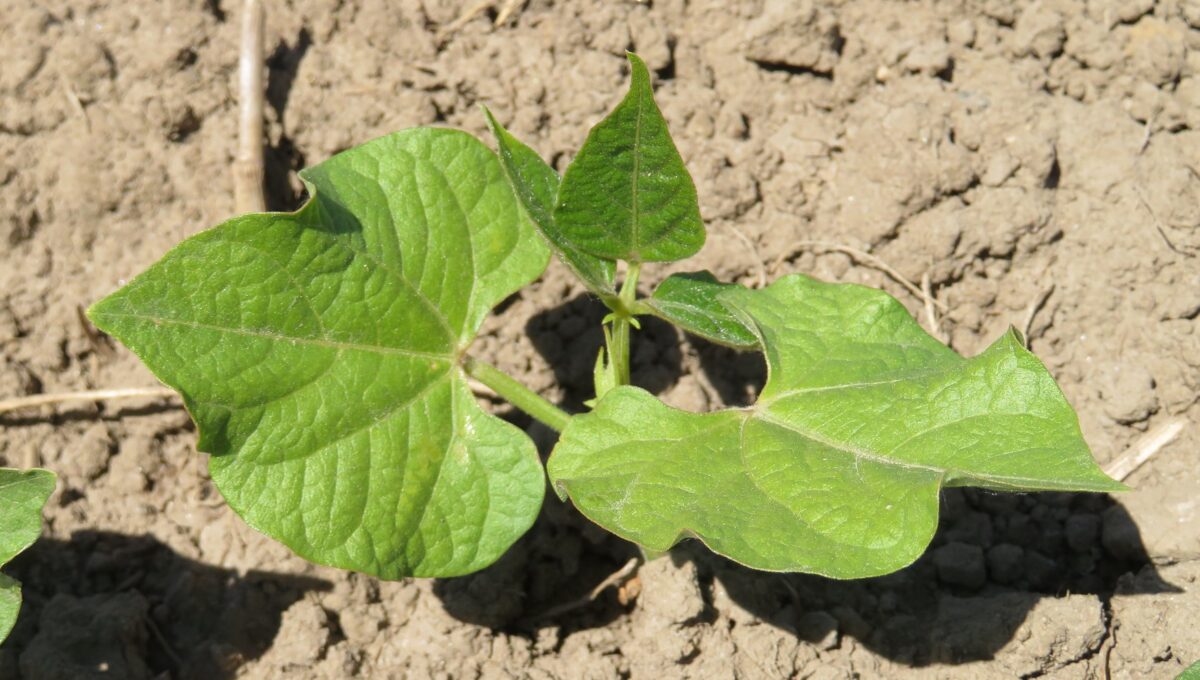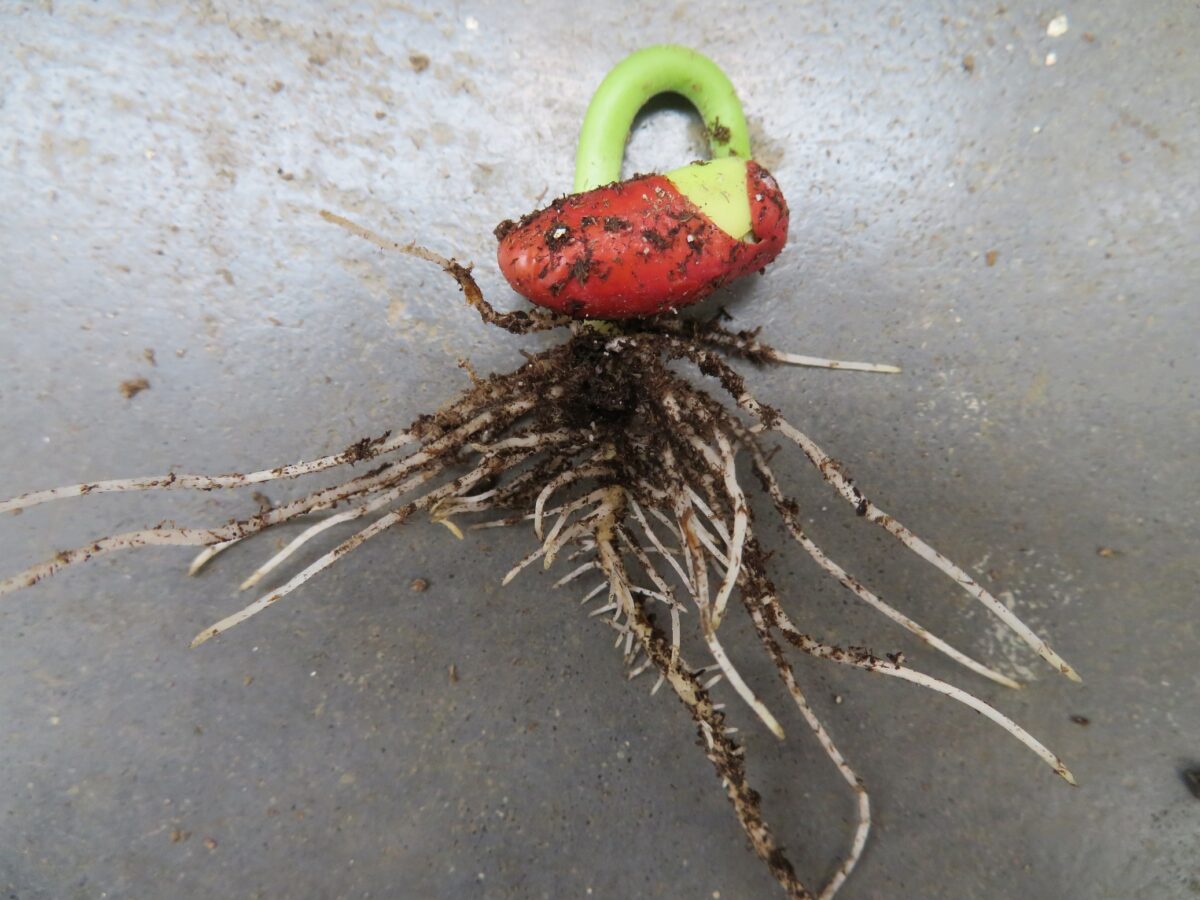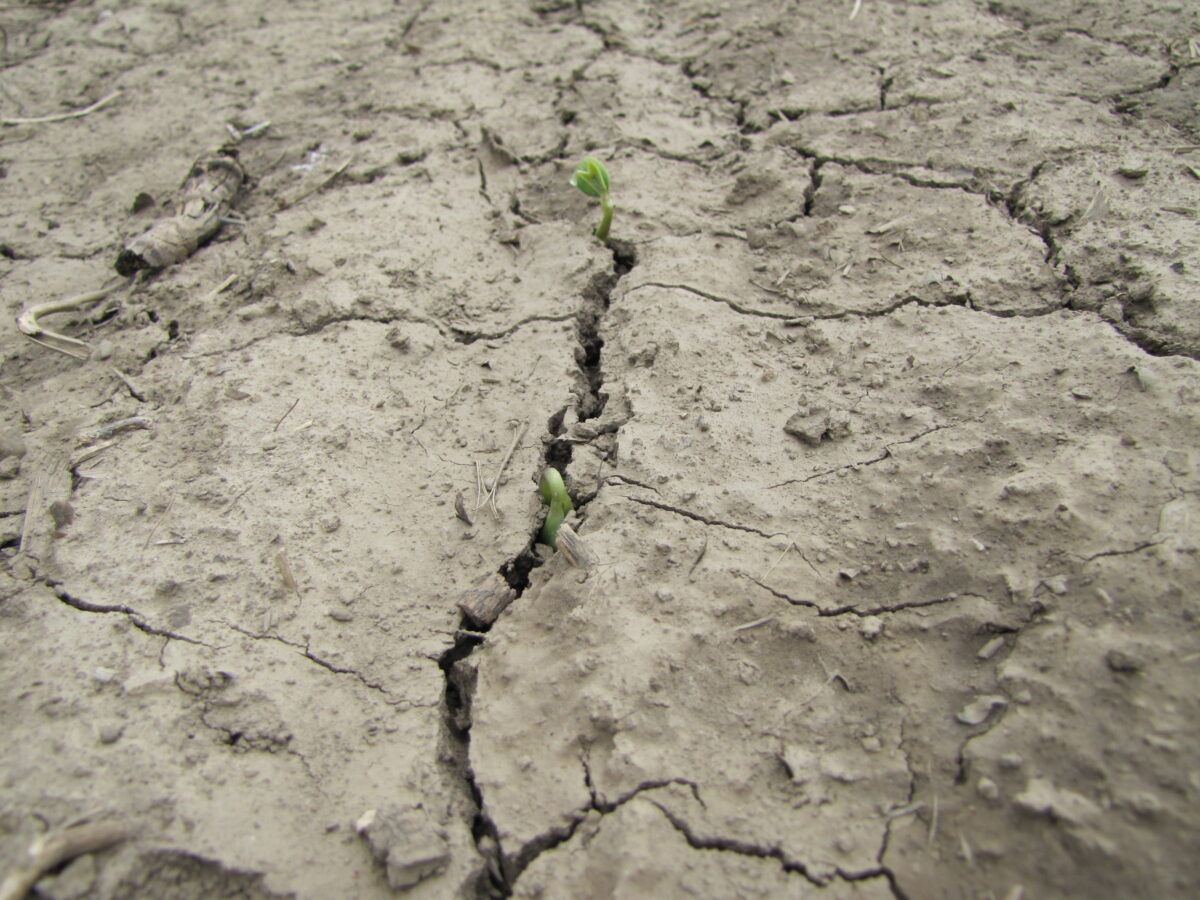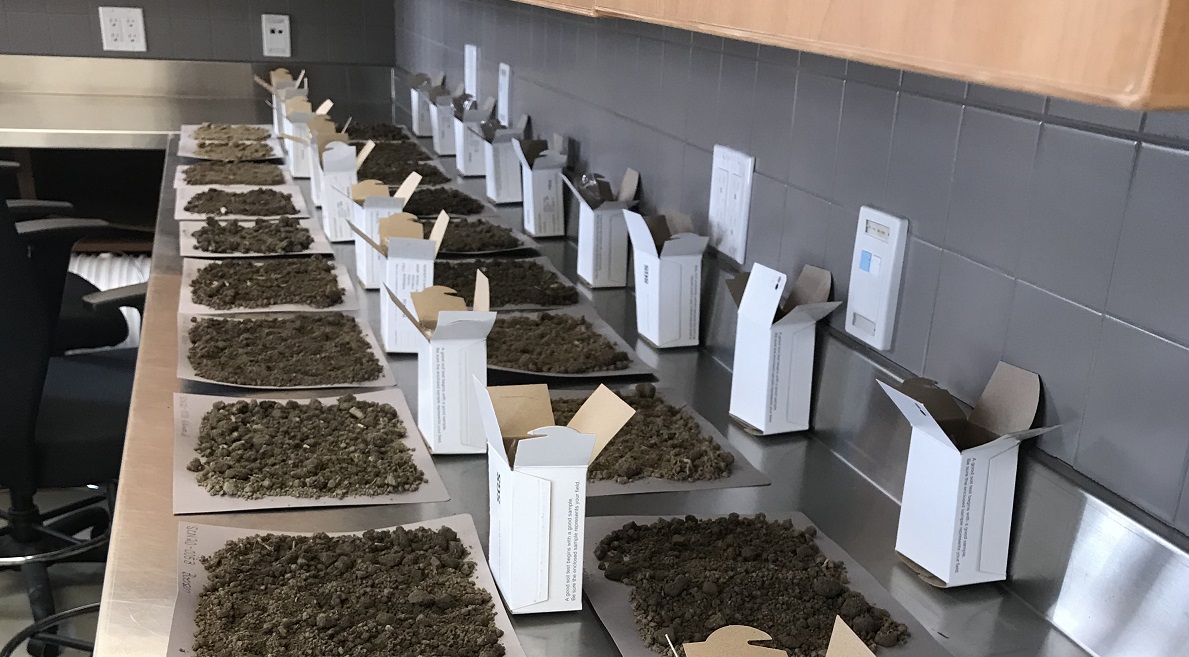Bald heads refer to seedlings that emerge with damaged or no growing point. Cotyledons (seed leaves) may or may not be present. Plants may develop auxiliary buds at the base of cotyledons but they fail to develop. Without a growing point, plants eventually die. The most common cause of bald heads is mechanical damage to…Continue readingBald Heads
Seed Quality
Using high-quality, pedigreed seed from inspected fields is important to promote early season vigour and reduce the risk of seed-borne disease. Bacterial blights, anthracnose and BCMV are seed-borne diseases that cause serious issues in some years. Most coloured bean seed (except black bean seed) is imported from arid growing regions in the U.S. where there…Continue readingSeed Quality
Inoculation
The species of rhizobia for dry edible beans is Rhizobium leguminosarum biovar phaseoli. Dry edible beans are less efficient at fixing nitrogen through rhizobia than soybeans or other legumes. Inoculation trials and routine use of an inoculant have not shown an economic advantage in Ontario, even though other regions do suggest inoculant use for virgin…Continue readingInoculation
Stand Assessments and Replant Decisions
An adequate stand of dry edible beans is a minimum of two-thirds to three- quarters of a full stand. Dry edible beans have a limited ability to branch and compensate Continue readingStand Assessments and Replant Decisions
Plant Development
Bean varieties are characterized by their growth habit. Indeterminate plants continuously grow and exhibit long vines. Most of the commonly grown bean types have a semi-determinate growth habit, meaning they continue to grow after flowering begins and develop short to long vines. Determinate types tend to flower and ripen over a short period. Determinate types…Continue readingPlant Development
Laboratories are accredited by the Canadian Food Inspection Agency (CFIA). Laboratories marked with * are also accredited to test for seed purity. Canadian Seed Laboratories Ltd.* P.O. Box 217 208 St. David St. Lindsay, ON K9V 5Z4 Tel: (705) 328-1648 Fax: (705) 324-2550 Canadian Seed Laboratories Ltd. is also accredited to do some seed disease…Continue readingOntario Labs Offering Custom Seed Germination Testing
Phosphate and Potash
Phosphate and potash recommendations for dry edible beans are presented below in the tables below. Where soil fertility levels are adequate, dry edible beans show minimal response to starter phosphorous. Where potassium fertility is low, deficiency symptoms appear in white beans as yellowing of the lower leaves and necrosis on leaf margins. Dry edible bean…Continue readingPhosphate and Potash
Dealing with Soil Crusting
Pounding rains from thunderstorms can result in severe crusting on heavy soil types, or soils with poor aggregate stability, and can inhibit bean emergence, particularly if hot, dry conditions bake the soil surface. Soil loosening and aeration may be required. There is no advantage to waiting once a crust has been identified. Waiting may increase…Continue readingDealing with Soil Crusting
Nutrient Testing of Tissue and Soil
The OMAFRA-accredited soil-testing program provides assurance of appropriate analyses to support guidelines for nitrogen, phosphate, potash, magnesium, zinc and manganese fertilizer, along with parameters for the amount and type of lime to apply. The analytical methods used were chosen to provide accurate results on the range of soils found in Ontario. There is no formal…Continue readingNutrient Testing of Tissue and Soil
Boron
Beans are very sensitive to boron and should not be grown in a field where boron was applied to rutabagas, sugar beets or forages in the previous year. Boron is needed only in very small quantities, and since an overdose is toxic, take extreme care in its use. Boron deficiency has not been diagnosed in…Continue readingBoron
